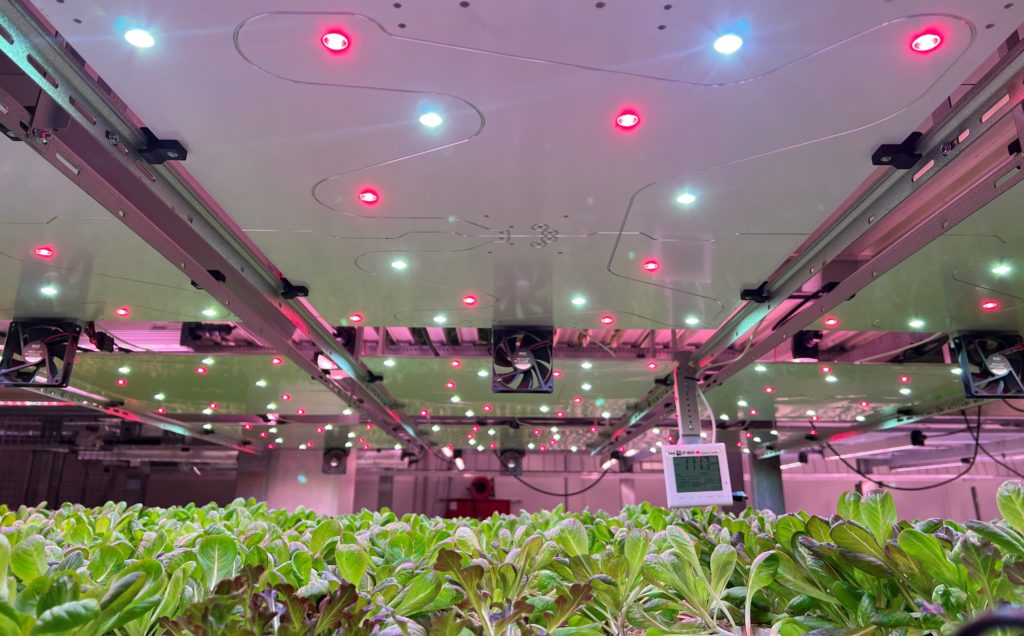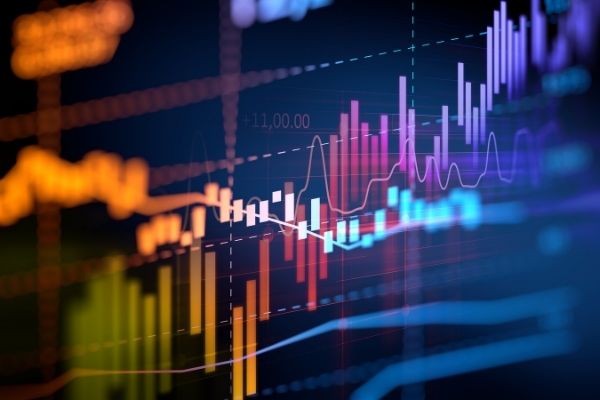According to the UN in 2050, about 68% of the global population is expected to live in cities. Food demand is increasing in these areas, while arable land outside cities is limited and decreasing.
Vertical cultivations are indoor cultivations in which the plants are stacked on top of one another. To succeed, vertical farmers must secure a long service life of LEDs, appropriate ventilation, limited heat, directed and controlled light on the plants, in order to reduce manual labour and minimize power consumption.
In the vertical farming market, LED iBond´s superior form factor and cooling properties provide ideal conditions for growing plants in layered greenhouses.
Vertical farming requires “smart” and adjustable lighting, proper ventilation, and efficient heat control in a compact configuration; exactly the features that LED iBond’s technology provides .
LED iBond Vertical Farming Grow Lights Reduce Heat for Healthier Plants
Vertical grow lights are transformational in their capacity to convert a valuable space into growing gardens with fresh produce and minimal transportation costs.
Temperature is a key factor in growing different types of plants – whether for decoration or as a food source. The recommended temperature range for indoor plants is 21-27 degrees Celsius (70-80 Fahrenheit) during the day, 18-21 degrees Celsius (65-70 Fahrenheit) during the night.
Traditional light bulbs (incandescent or fluorescent) generally give off four times the amount of heat that LED lighting emanates. This allows for the installation of lighting in areas where space is limited.An important point to note is that moving the LED and the plants closer together will not raise the temperature into a range that negatively impacts the growth of plants.
Vertical Farming is the Future
Vertical farming is a growing phenomenon of small micro-farms in urban and suburban areas. They range in size from a single room in an apartment, to a dedicated commercial warehouse. The advantages of vertical farming include the ability to control the temperature, humidity and lighting conditions – in a much more comprehensive way than even traditional greenhouses can offer.
Vertical farming lighting is an encouraging opportunity to enjoy fresh, hyper-local produce fitting for any unused spaces.
Vertical Agriculture Technology 101
Advances in agriculture, hydroponics and LED lighting systems have empowered a new wave of efficient, sustainable indoor harvesting. In this section we’ll dive into the tech you’ll need to get started in vertical farming.
Hydroponics
Instead of planting in dirt, like with traditional farming, hydroponic systems allow for vertical farmers to strategically feed an organic solution to the roots of their plants. It is estimated that hydroponic farming is more than 300% more efficient than traditional indoor farming.
Aeroponics
Aeroponics is the next evolution in vertical farming – allowing for the plant’s roots to be fed with a gentle mist, delivered via a hose that weaves through the solution chamber (where the plant’s roots extend). The mist keeps the roots moist and ready to absorb nutrients mixed into the solution.
Note that the roots are suspended in air, instead of being submerged in water or dirt. One of the benefits is that significantly less water (as much as 95% less than traditional farming methods) is required to grow produce.

Artificial Lights for Vertical Farming
Once you’ve decided how you wish to feed your plants – whether with a nutrient mist or submerged in a solution – it’s time to focus on the most critical aspect of vertical farming: the artificial light source.
High-Quality Vertical Grow Lights
Traditional light bulbs or tubes require frequent replacement, consume more energy and lose a lot of heat. LED lighting has multiple advantages – including longer life, low power consumption and improved efficiency, which means lower temperatures around the light source.
LED iBond holds a number of LED technology patents that allow our team to produce commercial-grade LED solutions that are just 6mm thick. Designed with environmental sustainability in mind, our aluminum-composite panels (ACP) are lightweight and recyclable.
Our unique design supports multiple sensors and easy integration with other existing vertical farming systems. For example, the Tracy LED system is a modular design that can easily be customized for unique layouts – carrying both light and electricity to the desired area for up to a 50 meter range from one electrical contact point.
Grow Lights with Calibrated Lighting
Successful indoor farms use a carefully calibrated artificial light source – set to the optimal electromagnetic spectrum needed for photosynthesis. Depending on the environment where they are installed – LED farm lights can supplement existing natural lighting, or serve as the sole source of electromagnetic radiation.
Similar to the human eye, plants absorb a variety of light. The reason plants appear green in color is due to the chlorophyll in their leaves. Chlorophyll, along with other complementary elements, transform carbon, water and light into oxygen – fueling plant growth.
Scientists have established that red and blue light is the most helpful in aiding plants absorb energy,based on where they fall on the color spectrum. Lighting conditions – especially if natural light is also introduced – need to be adjusted throughout the day to help ensure plants receive the correct amount and type of light.
Out of all the artificial lighting solutions available, LED is the most efficient and capable of producing the exact type of light plants need to thrive at any time of day or night.

How much light do indoor plants require?
Many plants thrive in environments where grow lights are left on 24/7. However, some plants that thrive in cooler climates may require shorter daylight hours to bloom – because the shorter days during the winter months helps with their life cycle.
Again, LED light technology provides the greatest level of customization, allowing indoor farmers to refine their setup to the needs of the plants they are growing. LED iBond has vast amounts of experience, including industry-exclusive patented LED-technology to help vertical farmers get the most out of their indoor LED-lighting solution.












